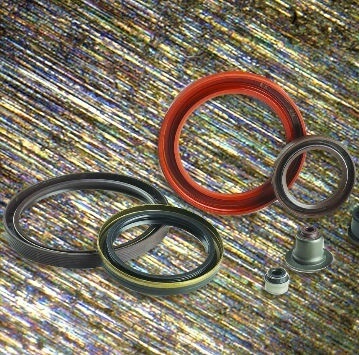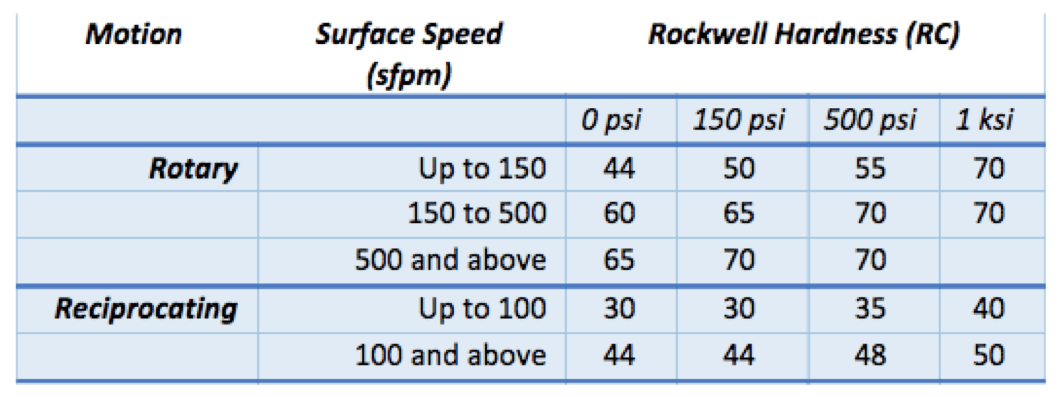Polymer spring-energized seals are an excellent option for many types of sealing applications.
However, this type of seal is not a one size fits all solution to sealing problems. There are certain factors that play into the performance of spring-energized seals, and if they are neglected they will severely impact seal performance. In this first part, we are going to talk about the importance of the shaft mating surface to spring performance.

Surface Hardness
An often-overlooked factor in the design of spring-energized seals is the hardness of the mating surface. For surface hardness below 45RC, typical polymer materials will polish the running surface, resulting in what seems a high level of initial seal wear but tapers off after a break-in period. If the hardness if more than 45RC, the break-in period will likely be significantly longer because the surface will be more difficult to polish. If the hardness of the mating surface is greater than 65RC, polishing is not likely to occur and the initial surface finish becomes paramount to seal life.
As a rule of thumb, surface hardness should be between 50RC and 60RC. In addition, the recommended surface hardness is also dependent on the pressure and speed. The table below shows recommended hardness values for various cases. As you can see, higher surface hardness values are required for high pressure applications.

Surface Finish
One of the major factors that can make or break an effective spring-energized seal design the surface finish of the mating surface. If the surface finish is too rough, it can result in leak paths and excessive wear on the seal, both of which can seriously compromise the seals performance. On the other hand, if the surface finish is too smooth, it can cause problem for dry running polymers like PTFE that depend on the transfer of a thin film to the mating surface. Surface finish requirements will vary according to seal lip material and the media that is being sealed.
For most polymers, the recommended surface finish is between 20 and 40 µin Ra. The table below shows the recommended surface roughness based on the media involved. You will notice a much finer surface finish is required when working with cryogenic materials, such as liquid hydrogen.

Surface Hardness and Seal Material
There are some other aspects to surface hardness that are equally as important, however. It is vital to match the mating surface to an appropriate seal material. In dynamic applications, the mating surface is usually going to be hard and can be used with a reinforced polymer material for the seal lip. However, in some instances a softer material may be required for the mating surface. This presents an extra challenge as a balance must be struck between a material hard enough to provide adequate sealing power yet soft enough not to damage the mating surface.
Conclusion
When designing a spring-energized seal solution, dont forget to consider the mating surface involved. Issues such as surface hardness and roughness have a major impact on seal performance, and cannot be selected without considering the seal lip material involved. Careful attention to details like these can make or break a seal design.
Related articles:
- 5 Energizers for PTFE Spring-Energized Seals
- 6 Polymer Jacket Materials for Spring-Energized Seals
- Cheat Sheet on Surface Finishes and PTFE Spring-Energized Seals
{{cta(‘6f04b7fb-d20d-4cd0-86d7-d24d84441ba5′,’justifycenter’)}}
